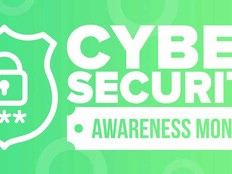Blockchain, one of the hottest technologies in any sector, could be a valuable tool for government. It could increase transparency in public service operations, increase supply chain visibility to combat counterfeits and automate paper-based processes to improve service delivery to citizens.
Interest in the technology is spreading worldwide. Research and Markets, a market research service, determined the global blockchain market was valued at $411.5 million in 2017 and will grow to $7.7 billion by 2022 — an astonishing annual growth rate of nearly 80 percent. In some areas where the Department of Homeland Security is working, blockchain is rapidly moving from hype to reality.
The technology is relatively simple; it’s a shared database managed by a network of computers around the world. The technology is highly resistant to data modification; transactions in a blockchain network are recorded as blocks of information in a chronological chain of data.
Each chain is copied and kept synchronized across multiple nodes or computers making the system highly resilient to attacks or data loss. Data can be added to a blockchain, but no information in it can be retroactively modified or deleted without alerting users.
Blockchain Needs to Work Across Tech Platforms
However, the challenge with blockchain technology is the potential for the development of “walled gardens,” or closed technology platforms that do not support common standards for security, privacy and data exchange.
Leaving the walls in place would limit the growth and availability of a competitive marketplace of diverse, interoperable solutions for government and industry to draw upon to deliver cost-effective and innovative services based on blockchain and distributed-ledger technologies.
The Science and Technology Directorate (S&T), the science adviser and research and development arm of the Department of Homeland Security, is pursuing two broad courses of action to encourage an open and inclusive future for blockchain technology, and paths that can be followed by any agency:
We actively work with and support DHS component agencies to understand their potential use cases and help them achieve their outcomes with the necessary research and development expertise and technologies.
And we support the development of globally available specifications that are open, royalty-free and free to implement to ensure interoperability across systems and prevent vendor lock-in.
Here’s one example. U.S. Customs and Border Protection recently partnered with S&T to explore how blockchain and distributed ledger technologies could facilitate lawful international trade across U.S borders.
The tracking and validation of goods, their elements and their origins throughout the entire supply chain for audit and compliance purposes is extremely challenging, so CBP wanted to update the paper-based system used to verify and approve trade agreements. The agency saw that blockchain could enable stakeholders (broker, importer and government) to know instantly the status of import products. By adding a level of secure transparency to the supply chain, all parties involved would be able to track and verify each product from origin to destination.
DHS Strikes Partnerships to Spur Blockchain Use
“Historically, when new technologies or solutions are incorporated into legacy systems, there are obstacles that create slowdowns as work-arounds are developed so that the systems mesh properly,” says Anil John, technical director of the DHS Silicon Valley Innovation Program.
“However, through the use of globally acceptable and implemented specifications and standards, we are addressing and removing those interoperability hurdles before deployment.”
Emphasizing this kind of architecture, standards and interoperability enables a high level of rigor, expertise and credibility essential to supporting the development of blockchain and distributed ledger technology solutions for DHS, its component agencies and other customers across the U.S. government.
This reality means that DHS S&T must work closely with its partners at all levels — research, development, testing and evaluation — as well as throughout government and industry, so that homeland security applications of blockchain and distributed ledger technology are effective and trusted.
This practice will lead to the development of solutions for critical homeland security challenge areas that leverage the best, most innovative ideas from U.S. industry.











